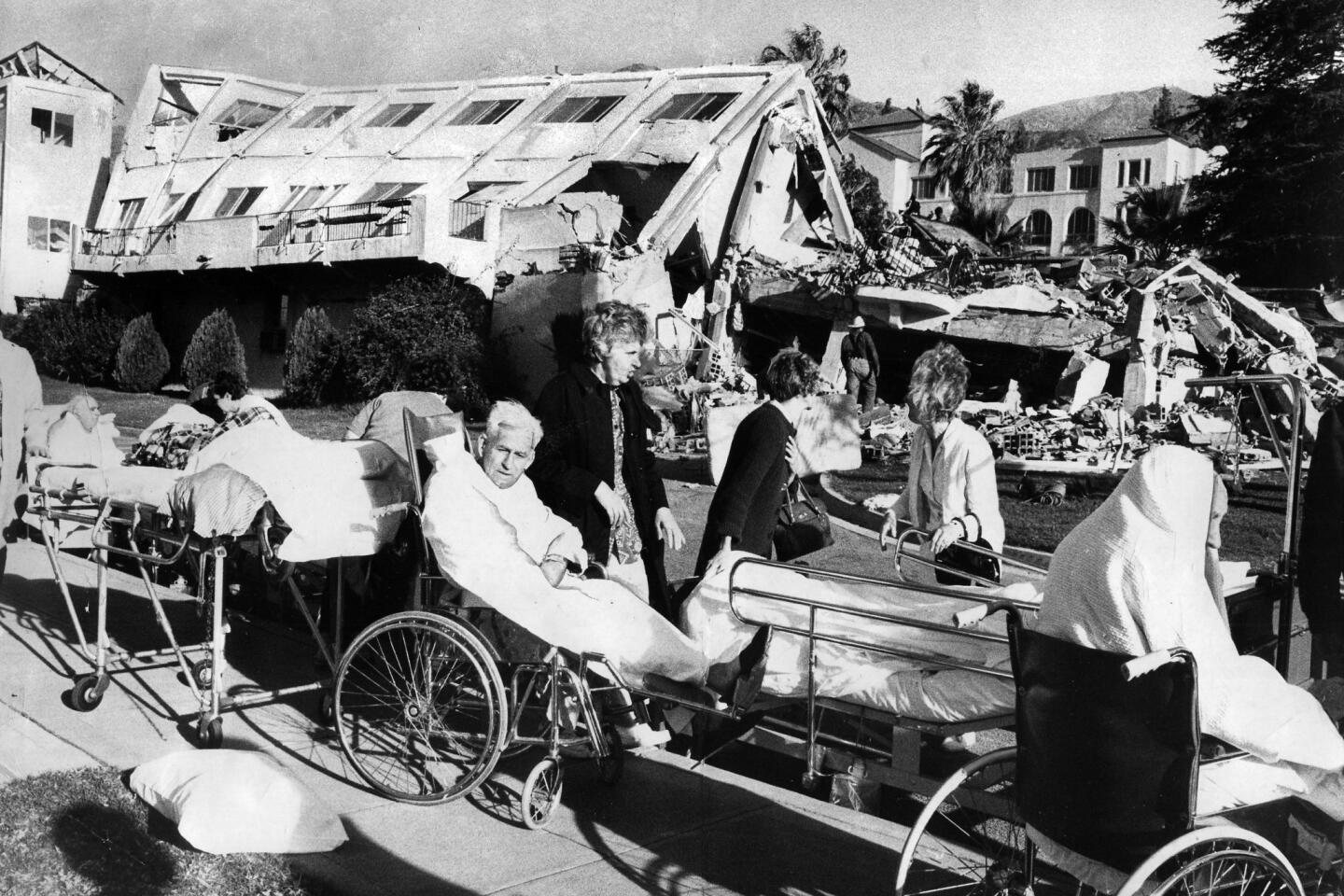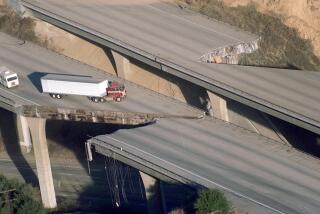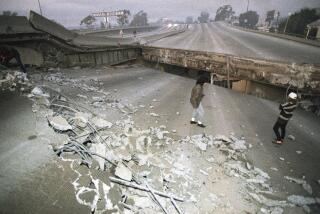L.A. Mayor Garcetti calls for aggressive earthquake safety effort
Los Angeles Mayor Eric Garcetti on Tuesday announced an aggressive new plan to tackle earthquake safety, including how to better protect vulnerable buildings.
Marking the 20th anniversary of the destructive Northridge earthquake, Garcetti said Los Angeles would for the first time partner with the U.S. Geological Survey to build a comprehensive strategy for dealing with how to better protect private buildings and other resources such as telecommunications and the water supply during a major temblor.
The move comes as the City Council is considering several seismic safety initiatives, including investigating potential dangerous concrete and soft-first-story buildings.
Taken together, the moves mark the most significant effort to improve earthquake safety in Los Angeles in a generation.
“What’s really at stake is the viability of this city,” said U.S. Geological Survey seismologist Lucy Jones, who will spend a year meeting with stakeholders and experts and devising policy recommendations for the city of Los Angeles.
FULL COVERAGE: California earthquakes
“We are here to make sure we are ready when, not if, the next earthquake hits,” Garcetti said at a news conference Tuesday.
The U.S. Geological Survey will essentially loan out Jones this year to convene public meetings, talk with property owners, and consult with technical experts about how to comprehensively deal with a persistent, unresolved problem -- how to get privately owned buildings seismically strengthened in Los Angeles.
Jones said her assignment for 2014 will bridge earthquake science and public policy to reduce earthquake risk.
“We are donating the majority of my time this year to working together and trying to find solutions to problems,” Jones said. “It’s a good prototype of taking our science and getting it applied to actually making a difference.”
Garcetti made the announcement a few days before the 20th anniversary of the 1994 Northridge earthquake, which killed about 60 people. He said it is essential for the city to make progress on earthquake safety.
While Northridge was damaging, Garcetti said, “The Big One could be a lot worse. … Too many in our city have stopped thinking about how we can best prepare.”
Garcetti said he is particularly interested in the concerns of property owners “as we discuss how to retrofit privately owned buildings.”
Garcetti laid out a timeline for the year’s goals, starting with developing in the first two months a list of problems and consequences. By spring, Jones will seek input from relevant stakeholders as well as input from technical experts. Later in the year, public hearings will be held and recommendations will be due to the mayor by December.
Jones will continue to be paid by the U.S. Geological Survey.
The partnership with the city and USGS also follows a Times report on concrete buildings that were built before 1976. By the most conservative estimate, as many as 50 of the more than 1,000 old concrete buildings in the city would collapse in a major earthquake, exposing thousands to injury or death.
Concrete buildings may look strong, but many older concrete buildings are vulnerable to the sideways movement of a major earthquake because they don’t have enough steel reinforcement to hold columns in place. Experts say sorting out which present the greatest danger of injury and death to occupants is a daunting problem that will require building-by-building assessments by structural engineers.
The Times has also written several stories exploring development on or near fault lines. A recent investigation found that Los Angeles and Santa Monica approved more than a dozen construction projects on or near two well-known earthquake faults without requiring seismic studies to determine if the buildings could be destroyed in an earthquake.
Wooden soft-story structures often are built over carports and held up with slender columns, leaving the upper floors at risk of crashing into ground-floor apartments during shaking. The 1994 Northridge earthquake damaged or destroyed about 200 of these structures, and 16 people died in the Northridge Meadows apartment complex.
Later Tuesday, the City Council is scheduled to commemorate the 20th anniversary of the Northridge earthquake and discuss eight motions related to seismic safety.
ALSO:
Map: The Hollywood fault and proposed developments
California’s funds for mapping earthquake faults running out
New state fault maps show higher earthquake risks in Hollywood
Twitter: @ronlin | @RosannaXia
More to Read
Start your day right
Sign up for Essential California for news, features and recommendations from the L.A. Times and beyond in your inbox six days a week.
You may occasionally receive promotional content from the Los Angeles Times.














